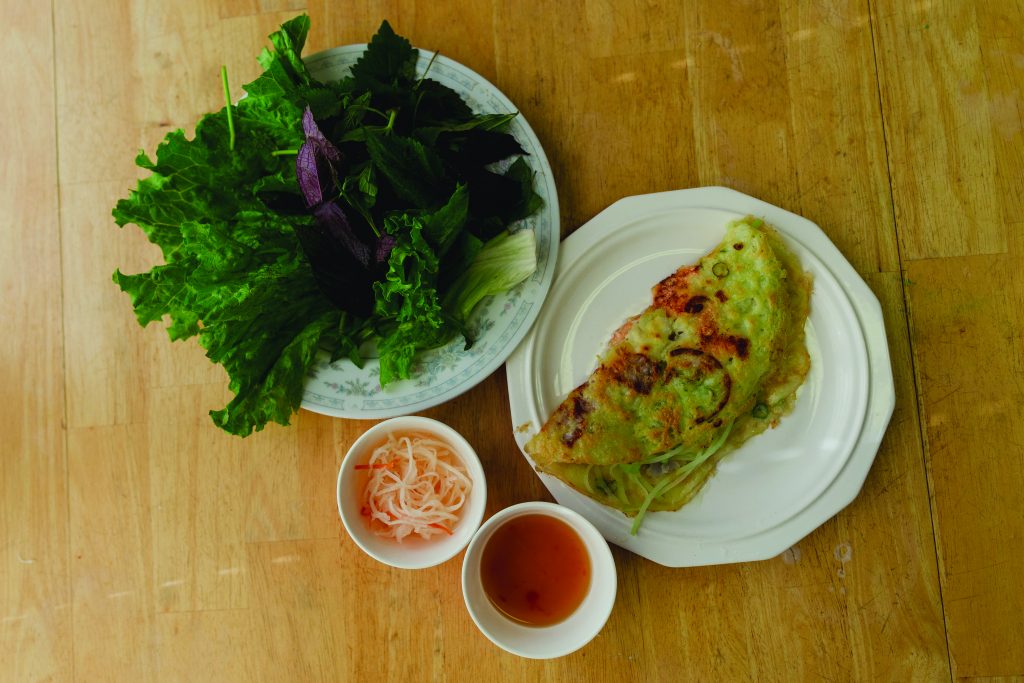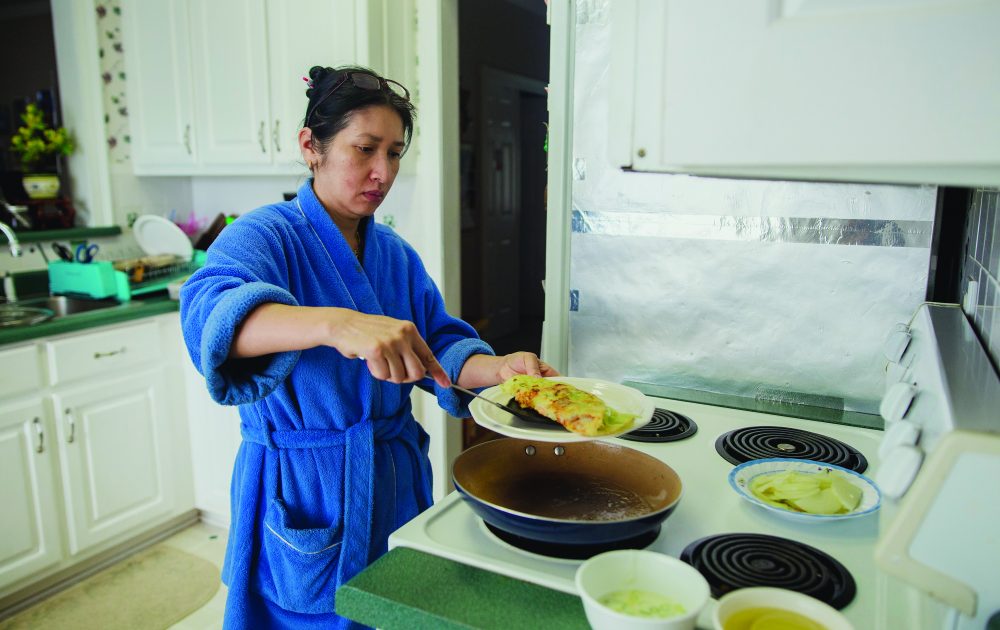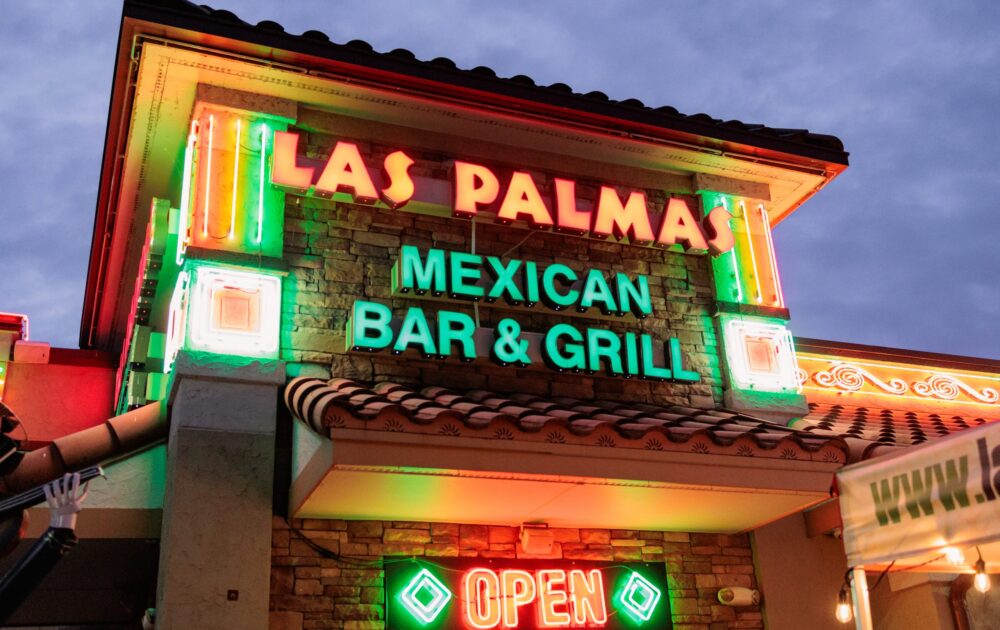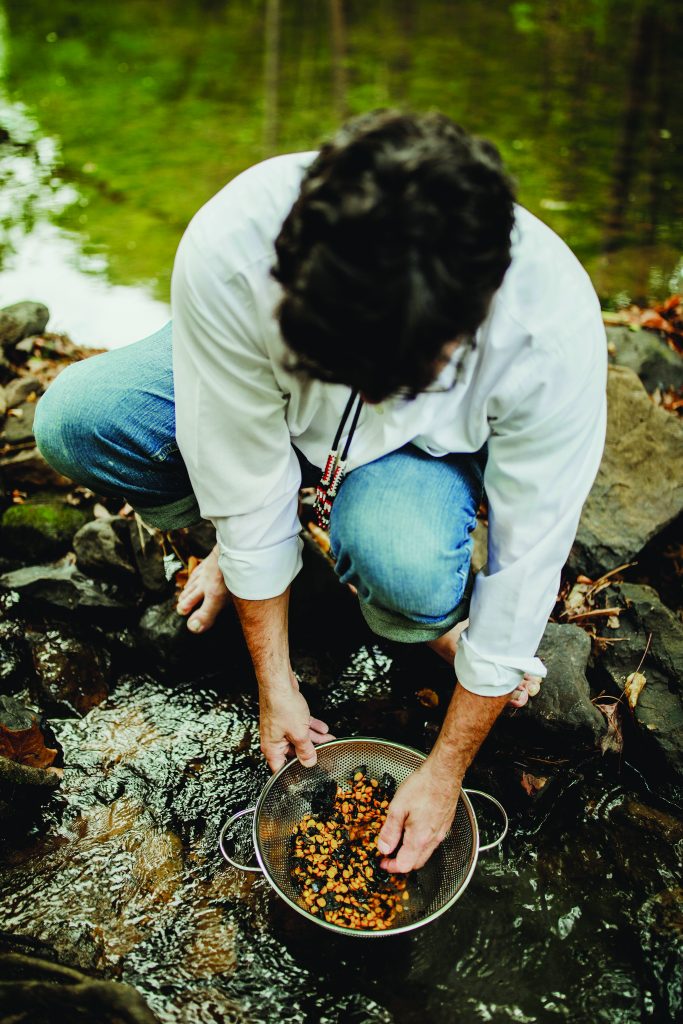
Photography Cameron Flaisch and Jason Huynh
Native American
I’ve been on a quest for foreign flavors, mouthwatering textures and ancient spices.
Confession: I love writing food articles. Not just because I get to eat, but because there’s something wonderfully investigative about asking a cook to divulge the secrets of their kitchen. But this assignment – to try foods from all over the world, supply the recipes and detail my experiences – has been delightfully… filling.
In fact, when I told my husband Michael about this assignment, he became absurdly excited and immediately began rummaging through our kitchen recipe drawer. He found it: an aged piece of paper scrawled with words written 58 years ago.
My husband is a full-quarter Native American of the Iroquois Nation, specifically the Mohawk Tribe. While our home and lifestyle reflects that of any stereotypical American-middle class couple, we also have sacred Native American heirlooms and artifacts on display to honor my husband’s family’s tribe.
And now we have a bundle of white corn drying on our front door.
You see, Michael’s Totah (the Mohawk word for “grandmother,” meaning “Honored Older Woman”), Elva Levins wrote a detailed recipe for Indian Corn Soup for my mother-in-law, Cynthia in August of 1960.
Michael is making the soup, the traditional way. It may be ready around Thanksgiving.
In the meantime, I invite you to take a culinary cultural journey with me to the Six Nations Reservation in Canada, Vietnam, Mexico and Pakistan.
Corn Soup “oh-no-gwa-die-yae”
Six Nation Reservation, Seneca Tribe (friends of Mohawk)
The recipe below is directly transcribed from
Elva Levins’ recipe.
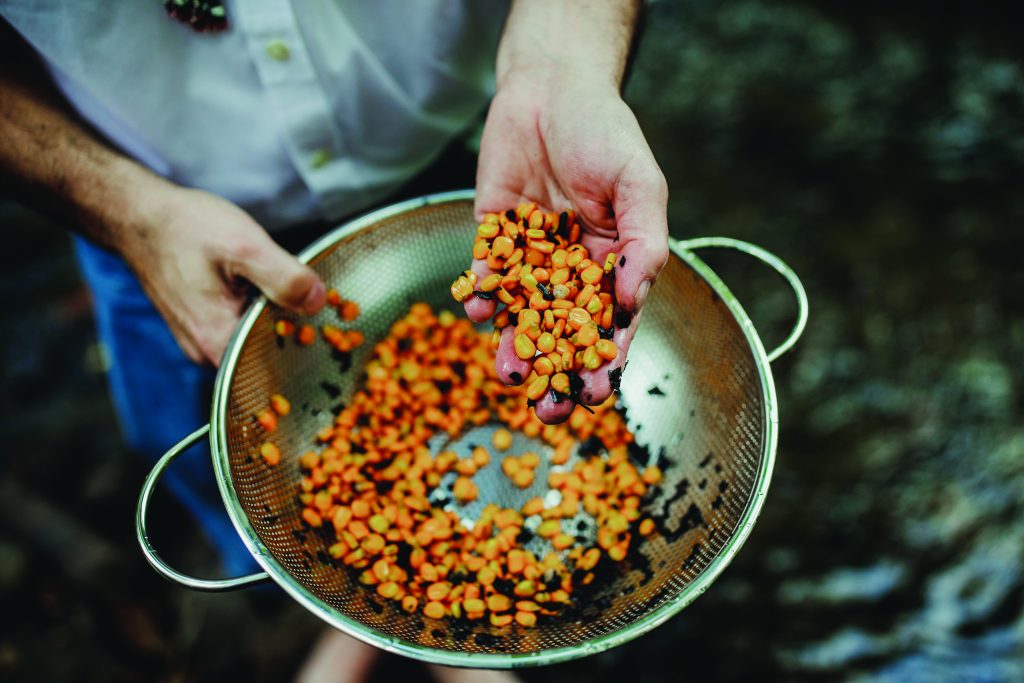
Instructions
After you have harvested your white corn, take off the outer layers of husk and pull back the inner layers as a tail. Bind together 20-30 ears so as to make a bunch and hang to dry. This will take about two months. In the meantime, they make excellent decorations for your fireplace or front door at Thanksgiving.
When dry, shell the corn, discarding any but the full, plump kernels.
Take one quart of wood ashes (preferably from hardwood) and divide into two parts. Mix half of this with 2 quarts of corn, and add water to cover. Bring to a boil, and stirring often, cook for about 10 minutes. Drain into corn basket and rinse thoroughly in running stream. Repeat the ashes and boiling process, this time cooking about an hour, then washing at stream again. Bring to boil once more in clear water and rinse again most thoroughly. By this time, the corn is plump, fluffy and white.
Now you are ready to begin your soup.
Hand pick and cook slowly in salted water until done. Meanwhile, cook together a large piece of pork with blanched corn using water to cover well, cooking about three hours. Add drained, cooked beans and presto! Your dinner is ready.
You may want to use the more modern way which cuts down on time. In that case, take 2 cans of hominy and drain. Cook together with three pork hocks and small piece of salt pork, cubed. About 2 ½ to 3 hours.
When meat is tender, add a can of red kidney beans, stirring well with spoon and serve.
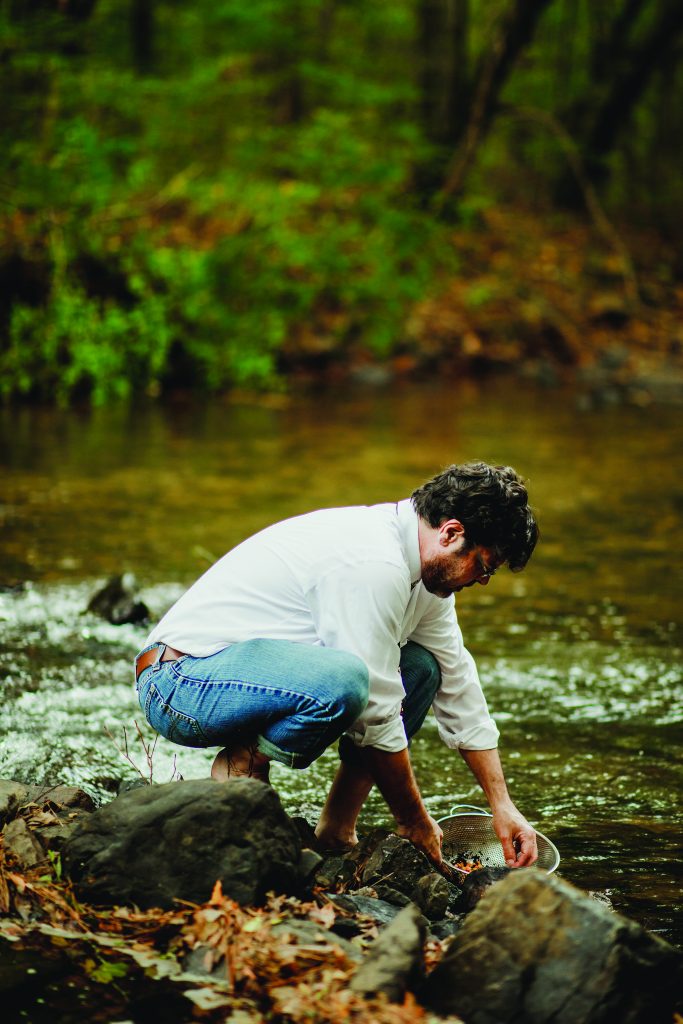
Michael Hillman is rinsing a mixture of dried corn and wood ash in the stream to make hominy for authentic Indian Corn Soup
Pakistan
Faareha’s face is flustered with stifled excitement as we enter her home and take our seats on a comfy sofa in her family’s modest, very clean living room. Her mother, Shahla Aftab, along with a slew Faareha’s aunts, are busying themselves in the kitchen two rooms away. I can smell the spices and what I think is fresh bread baking in the oven.
Faareha Baig is one of my husband’s students and she and her family moved to Calhoun from Karachi, Pakistan three years ago. The slight mixing of Pakistani and American culture is noticeable to a sharp eye, from the meticulously stacked shoes on the front porch, the women’s gorgeous, traditional attire from their country… and the Dr. Strange figurine on the TV stand, a gift to Faareha’s little brother Sami from a friend. Faareha and her female family members are sans their hijabs, since they are indoors and in their home.
I catch a glimpse of Faareha fetching a platter from the china cabinet in the dining room, and moments later, the women are bringing in an assortment of colorful and pleasantly pungent dishes to spread across the coffee table. Shahla places a basket of covered, steaming naan bread and we break it and load our plates with nahari – a slow cooked stew of lamb and bone marrow swimming in gravy and Dal Mahkni, a bright orange dish of lentils, kidney beans, butter and cream and a spice that is both satisfying and also subtly makes my nose run.
I learn – with careful instruction and thoughtfully minimal giggling from the family – that I not only eat like a pig, but that I should break the naan into small pieces and pinch up the chunks of lamb. Then with other small pieces of naan, I should dip the Dal Mahkni onto the bread.
It’s an amazing, earth-shattering plethora of hearty, mild and spicy. I have two plates full of food and my husband has three.
FYI, Shahla gets her ingredients from a Pakistani grocery store, Suvidha Indo-Pak, in Marietta.
Nahari (Mutton)
The national dish of Pakistan
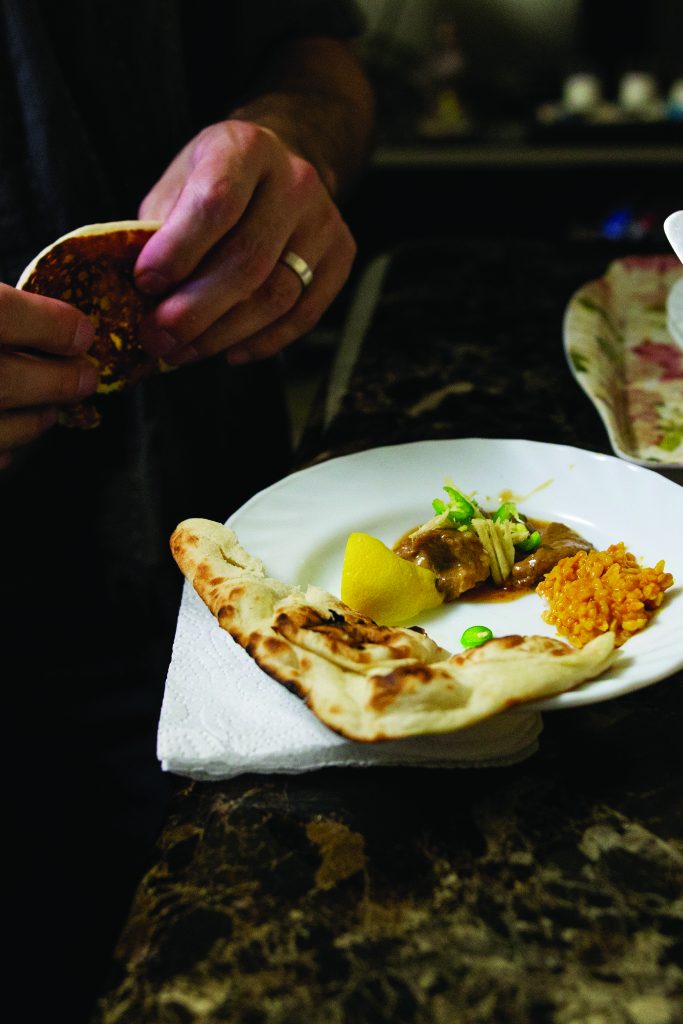
Preparation and cook time: 2 hours
Ingredients
1 small onion
1 cup oil
2 tsp coriander powder
2 ½ tbsp ginger/garlic paste
2 tsp red chili powder
1 tsp turmeric powder
Salt (to taste)
1 tsp grind whole spices
2 tbsp fennel seed
Black cardamom (4 to 5 pieces, make small pieces)
Dry ginger (cut into small pieces)
Dry roasted wheat flour
Ginger, lemon, coriander and green chili peppers for garnishing
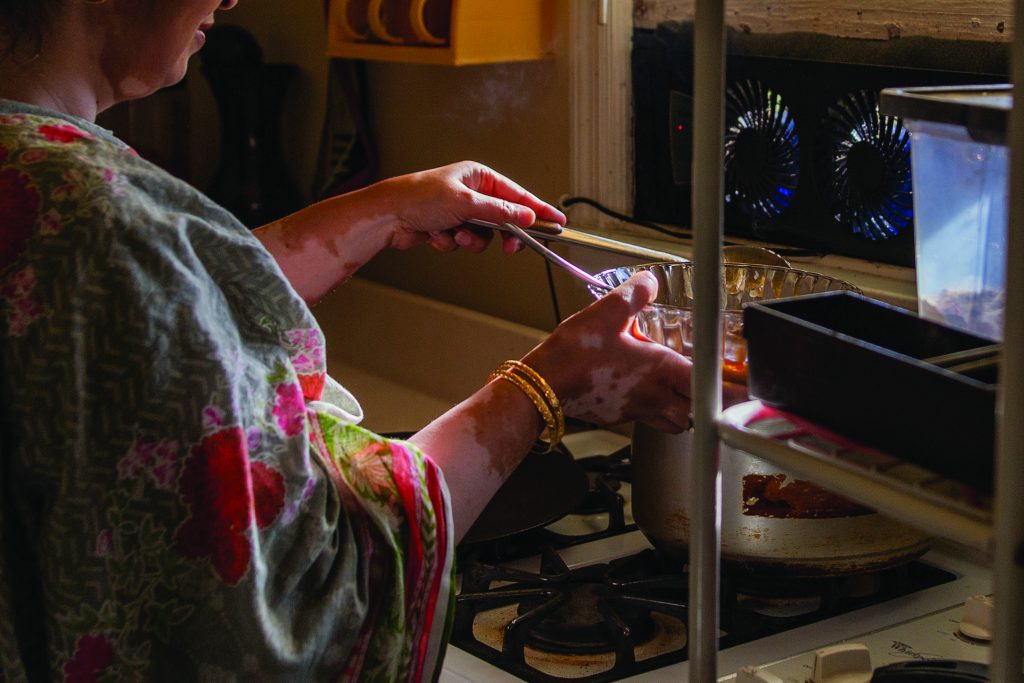
Shahla Aftab cooking
Instructions
In pot, add oil and let it get hot.
Add onion and fry until golden brown
Add ginger, garlic paste, black cardamom, fennel seeds and dry ginger and fry for 3-4 minutes
Add mutton along with coriander powder, turmeric powder, red chili powder and salt. Cook for an additional five minutes on high heat.
Add water and cover. Cook on medium heat until meat is tender.
When the meat is tender, lower the flame and cook for an additional 6-7 minutes.
Add water to dry, roasted wheat flour and mix well. Should be lump free.
Add this mixture to the curry with a little more water and cook on low for 8-10 minutes.
Add the ground whole spices and keep it on low heat for an additional 2-3 minutes.
Serve hot and with naan bread.
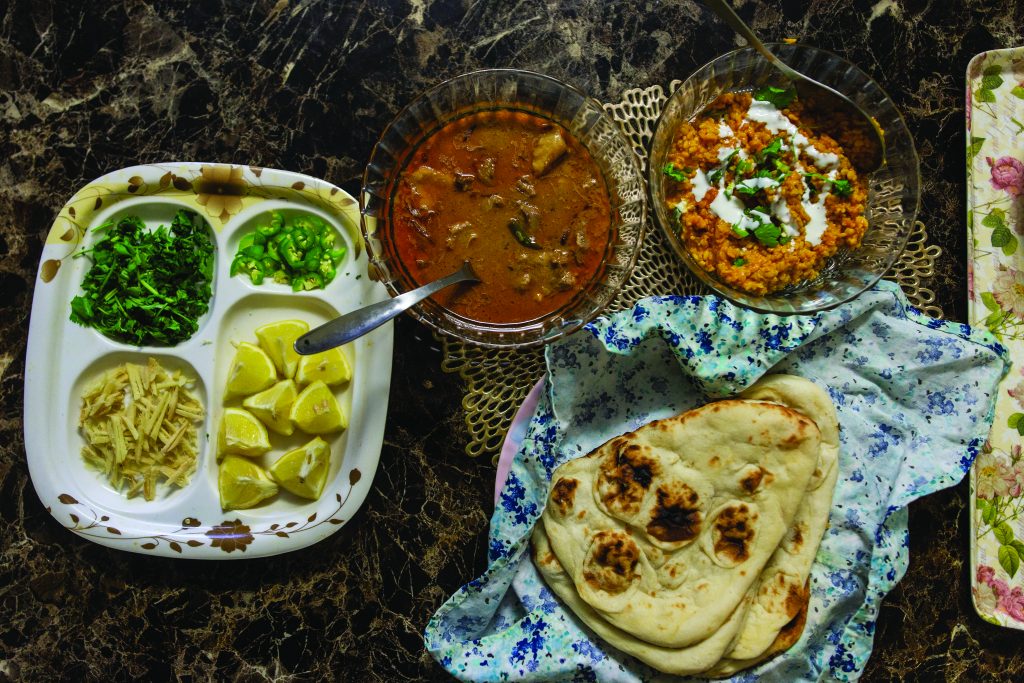
Mexico
I never knew what a taco was until I bit into one at Morelos in 2013.
Sure, I’d had your standard fast food taco experiences and yes, I have been to dollar taco night at participating Tex Mex locations… but trust me, it’s not the same.
I moved to Rome in 2007, and I’d never heard of the hidden gem called Morelos. My then-boyfriend (who eventually became mi marido) knew my aversion to Tex Mex style food, but convinced me to try this place.
Morelos Carniceria y Supermercado is in a completely unassuming location, wedged between a cell phone store and a laundromat in West End Shopping Center off of Shorter Avenue in Rome. Once you enter the supermarket, the restaurant is tucked away in a corner to the right. The booths are garish shades of red and green juxtaposed against orange walls adorned with bright, cultural décor. You can usually count on soccer, Spanish music videos or soap operas playing on the televisions on either end of the dining area.
Every single dish at Morelos is incredible, from sopes that will change your life to gorditas stuffed with hot, steaming meat, vegetables and brimming with crumbly queso fresco. But it was that first time when my taste buds were introduced to a proper, simple taco asada that won me over completely. I don’t like to throw the phrase “religious experience” around often, but… you know.
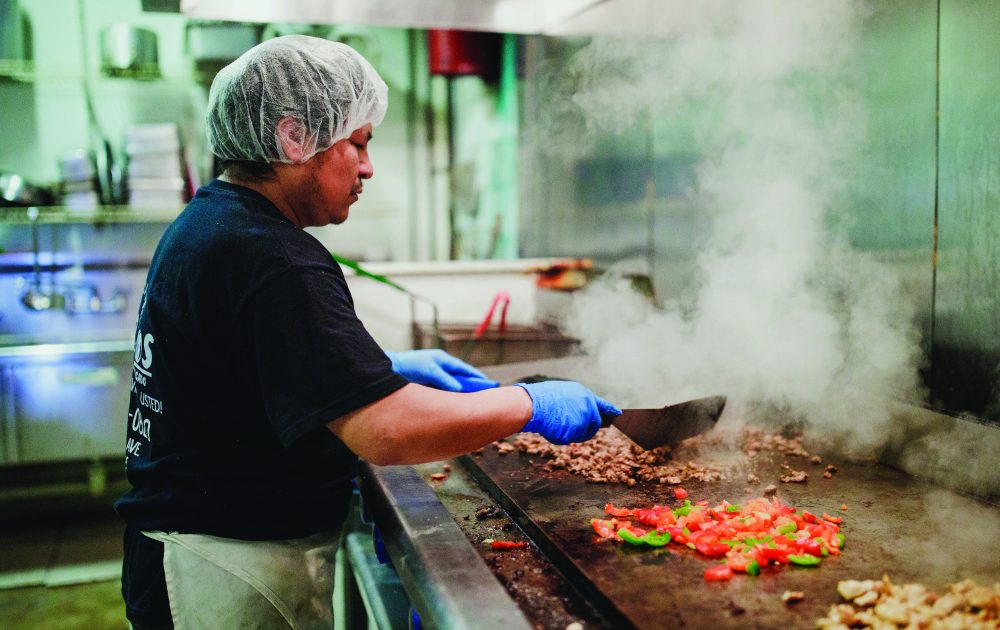
Receta Para Tacos de Carne Asada
Recipe for Steak Tacos
Serves Two (Three Tacos Each)
Prep Time: Marinate Meat Night Before
Cook Time: 20 Minutes
Ingredientes (ingredients):
6 corn tortillas (Recommendation: La Quetzalteca at Morelos)
2 lbs of flank steak
1 medium white onion – Chopped
1/2 cup of fresh cilantro – Chopped
1 cup of mojo criollo (Recommendation: Goya at Morelos)
2 tbsp of meat seasoning (Recommendation: El Chef Merito Meat Seasoning at Morelos)
2 tbsp of butter
1/2 cup of olive oil
1 tsp of Salt
Optional
1 large avocado, sliced
1 medium lime cut into wedges
1/2 of crumbled queso fresco (Recommendation: Olé Queso at Morelos)
Instrucciones (instructions):
Cut flank steak into thin strips and, in a bowl, combine the steak, salt, mojo criollo and steak seasoning. Make sure to really massage the seasoning into the meat. Let this sit overnight.
The next day, bring a large skillet to medium-high heat and add the marinated steak. Continuously turn over and stir. Let the steak cook until the outside is slightly crispy, but the meat is not overcooked. Remove from skillet and set aside.
In small bowl, mix together the chopped cilantro and onion.
Take a medium skillet and bring it to medium heat. Add just enough butter to lightly cover the surface. Warm the tortillas here until soft, flipping over to get both sides. Immediately serve steak, cilantro, and onions on top.
Optional: garnish with lime wedges, avocado slices or sprinkle with queso fresco.
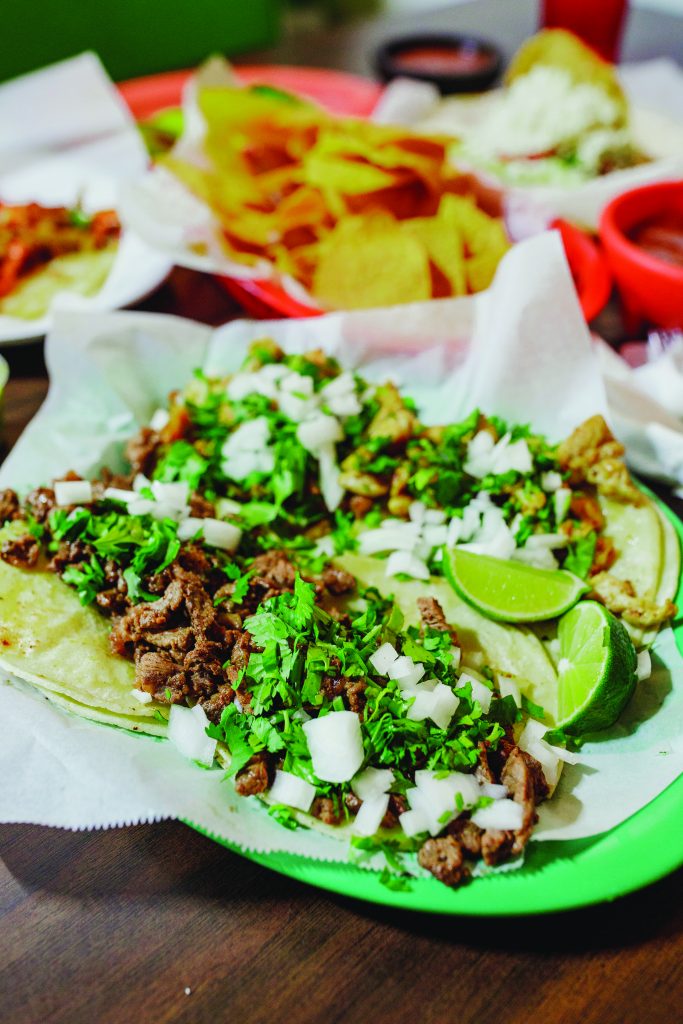
Vietnam
The Huynhs are like any other family, only unlike their American counterparts, there’s more of an Asian accent to their lives, right down to the altar of Buddhas, honored family heirlooms and the authenticity of their menus.
Kim Huynh immigrated to the United States in April of 1990, five months after her husband, and – just as throughout her childhood and as long as she can remember – her table still often sports the delicious, crispy Banh Xéo.

Kim Huynh
Her parents (who are 100 percent Vietnamese and don’t speak a lick of English) aren’t particularly fond of American food. Therefore, their culture always thrives in the Huynh household, because Kim keeps the kitchen filled with the scents of authentic Vietnamese cuisine.
Banh Xéo is a common street food in Vietnam, particularly popular in the southern part of the country, and is a Vietnamese take on a pancake or crepe. Huynh explains that when the French were in Vietnam, the Vietnamese took a lot of their dishes and adapted them into their own culture, putting a Vietnamese spin on them. Another example is Banh Mí, a common Vietnamese-style sandwich, where French baguettes are used.
While Kim was growing up, she and her sister could walk to any restaurant or nearby food stand and get Banh Xéo, and their mother would always make it whenever they wanted some. The delectably bold-flavored Banh Xéo is simple to make and filling.
When I tried Kim’s Banh Xéo, the flaky crust, plump shrimp and green sprouts dripping with soy sauce made me close my eyes with an audible “mmmmmm.”
Banh Xéo
Thành phan (ingredients):
1 Bag of Saigon pancake flour mix
1 Can of coconut milk 13oz
Chopped green onions
Sliced onions
3 cups of water
1lb of pork belly
1lb of shrimp
1lb of chopped bean sprouts, carrots or chayote
Huong dan (instructions):
Mix pancake mix, coconut milk and water in large bowl and let sit for 15-20 minutes.
Coat pan with vegetable oil and heat on high.
Put handful of shrimp, pork belly and onions in the pan.
Then pour enough mix to cover the bottom of pan then cover with lid for about 5 minutes.
Open lid and throw in vegetables and cover for about another 3 minutes.
Flip half of the dish over the other half like an omelette and put on a plate to serve.
Eat with soy sauce or fish sauce (mixed with garlic, chili pepper, lemon juice and water).
